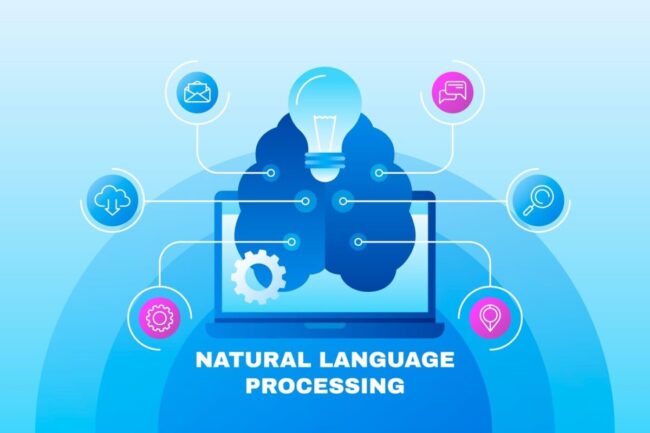
Companies are overwhelmed with information from various sources such as phone calls, chats, emails, and social media interactions. However, amidst this noise, there’s a valuable asset: conversation analytics. This potent instrument enables companies to extract useful information from the conversations they have with customers, employees, and stakeholders. Utilizing the transformative potential of conversation analytics, businesses can dramatically improve their operations, enrich customer experiences, and stimulate innovation.
Understanding Conversation Analytics
Conversation analytics refers to the process of collecting, analyzing, and interpreting verbal and written dialogues to uncover insights about interactions. It employs advanced technologies such as natural language processing (NLP), machine learning, and artificial intelligence (AI) to decipher emotions, sentiments, and key themes within conversations. By converting qualitative data into quantitative insights, companies can better understand customer needs, preferences, and behaviors.
This transformative process initiates with the accumulation of conversation data from diverse sources. After being collected, the data is meticulously evaluated to identify patterns, trends, and irregularities. The ultimate objective is to compile a thorough understanding of how conversations influence business results. This enables organizations to make well-informed decisions supported by data-driven insights.
Leveraging Natural Language Processing (NLP) for Deeper Insights

The dependence of conversation analytics on technologies such as natural language processing (NLP) is substantial, as it aids in deriving significant insights. By understanding the context, tone, and intention of each conversation, NLP enables businesses to gain a more in-depth understanding. From interpreting minor emotional signals from upset customers to identifying repeated patterns in employee feedback, NLP offers a degree of detail often missed by conventional data analysis tools.
For instance, customer service teams can use NLP-powered conversation analytics to automatically flag interactions where customers express frustration or dissatisfaction. This real-time insight enables businesses to step in before issues escalate, fostering a more responsive and empathetic customer service approach. By identifying patterns in customer sentiment, organizations can adjust their strategies to better meet customer needs, resulting in improved satisfaction and loyalty.
Enhancing Customer Engagement
Conversation analytics’ greatest benefit is its potential to boost customer engagement. By examining customer communications, companies can pinpoint difficulties and obstructions in the customer experience. Grasping the context and sentiment of conversations allows businesses to customize their responses and solutions to cater to specific requirements.
For example, a business using conversation analytics might uncover recurring problems customers encounter during support calls. By proactively tackling these issues—whether through enhanced training for customer service staff or by refining self-service options—companies can forge a more seamless and satisfying customer journey. This strategy not only boosts customer loyalty but also encourages positive referrals, which, in the end, propels revenue growth.
Driving Operational Efficiency
Beyond improving customer experience, conversation analytics can significantly boost operational efficiency within organizations. By analyzing internal conversations, businesses can identify inefficiencies in communication, workflow, and team collaboration. This insight enables leaders to streamline processes, eliminate redundancies, and enhance teamwork.
For instance, a business may scrutinize transcripts from meetings to ascertain if the conversations are productive or deviating from the intended path. When the analytics indicate a trend of unproductive meetings, the leaders have the opportunity to put strategies into action to steer the discussions back on track, establish explicit agendas, and emphasize the necessary actionable steps. This leads to the creation of a nimbler organization that can rapidly adapt to market fluctuations and internal hurdles.
Informing Product Development

Product development is another area where conversation analytics proves invaluable. By analyzing customer feedback and interactions, businesses can gain deep insights into what their customers truly want and need. This data-driven approach can guide the entire product development lifecycle, from ideation to launch.
For instance, a tech company may analyze support tickets, customer reviews, and social media conversations to identify desired features or common pain points with their products. By integrating these insights into their development process, companies can create offerings that resonate more profoundly with their target audience, leading to higher adoption rates and customer satisfaction. The iterative nature of this feedback loop ensures that products continually evolve in line with customer expectations.
Fostering Employee Engagement and Retention
Not only can conversation analytics be applied to external interactions, but it is also crucial in boosting employee engagement and retention. Through the analysis of internal communication, businesses can gain understanding of employee feelings, satisfaction, and levels of engagement. Recognizing possible issues or areas of concern enables companies to take preventative steps to cultivate a positive work environment.
For instance, if analytics highlight a recurring theme of discontent among employees regarding workload or management methods, leaders can put in place strategies to enhance team interactions, supply extra resources, or introduce training initiatives. By proactively paying attention to employees via conversation analytics, businesses can foster a motivated workforce that is more inclined to remain engaged and dedicated.
Measuring Success and ROI
As businesses invest in conversation analytics, measuring success and return on investment (ROI) becomes crucial. By establishing key performance indicators (KPIs), organizations can assess the impact of their analytics initiatives on both customer and employee engagement.
For example, by monitoring parameters like customer satisfaction ratings, net promoter scores or employee retention percentages, businesses can obtain concrete proof of the advantages gained from conversation analytics. Additionally, companies can carry out A/B testing to assess the impact of amendments made based on information obtained from analytics. This cyclical method enables firms to constantly fine-tune their plans, optimizing the returns on their investments.
The Future of Conversation Analytics in Busines
As technology progresses, the potential of conversation analytics will also develop. The merging of AI and machine learning will pave the way for more complex analysis, permitting businesses to acquire insights instantly. This real-time access will enable businesses to meet customer demands and market changes dynamically, enhancing their agility and competitiveness.
Furthermore, as remote work and digital communication become more widespread, the demand for strong conversation analytics tools will continue to rise. Businesses that adopt these technologies will have an advantage in navigating the intricate modern business environment, facilitating stronger relationships with both customers and employees.
Conversation analytics is a transformative tool in modern business. By extracting insights from conversations, companies can improve customer interaction, increase operational efficiency, guide product development, and promote employee satisfaction. As the environment continues to change, those who utilize conversation analytics will unquestionably spearhead innovation and success.
The Power of Conversation Analytics in Modern Business – Music Raiser




